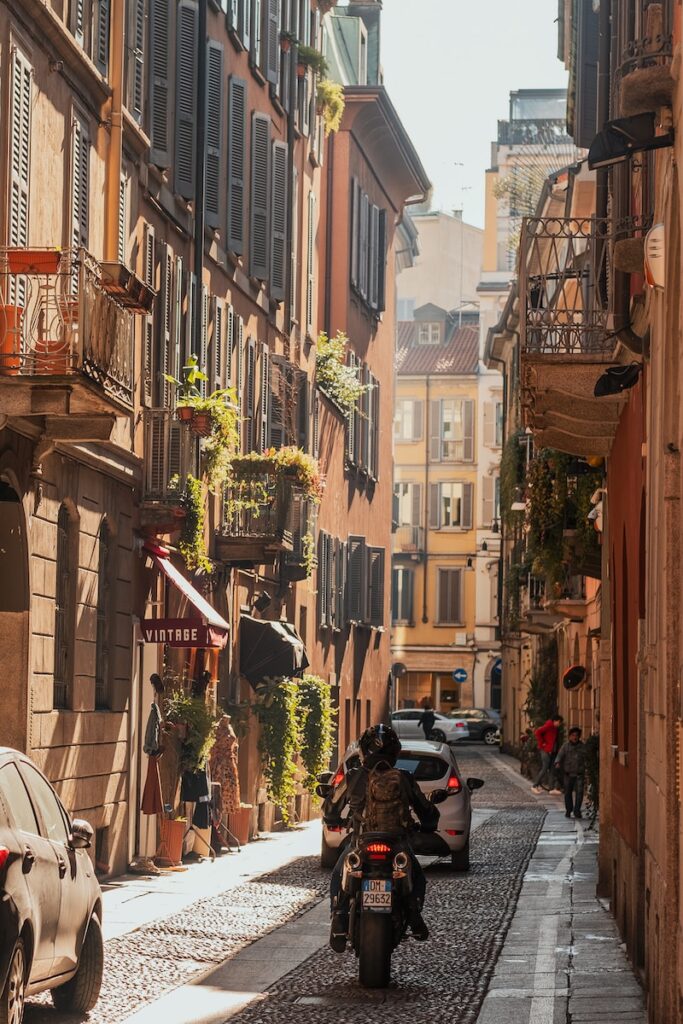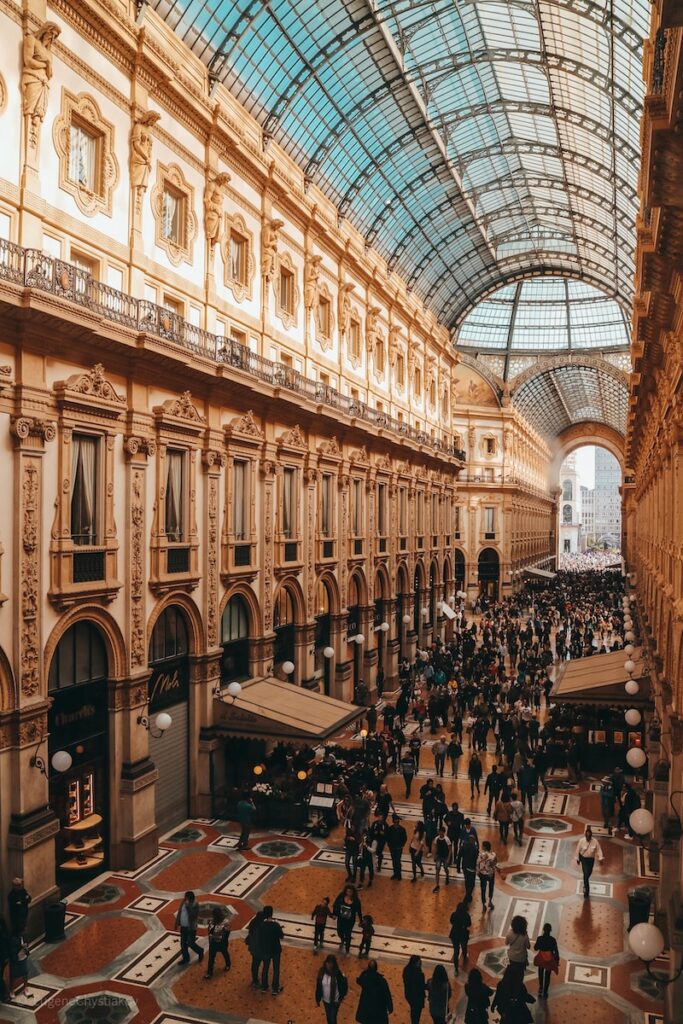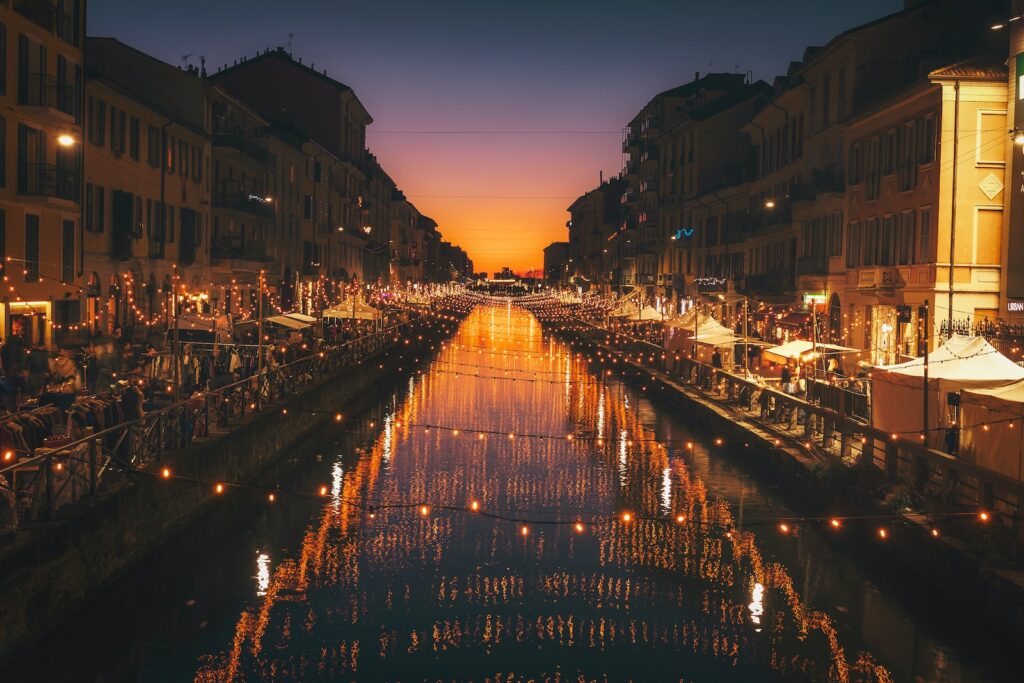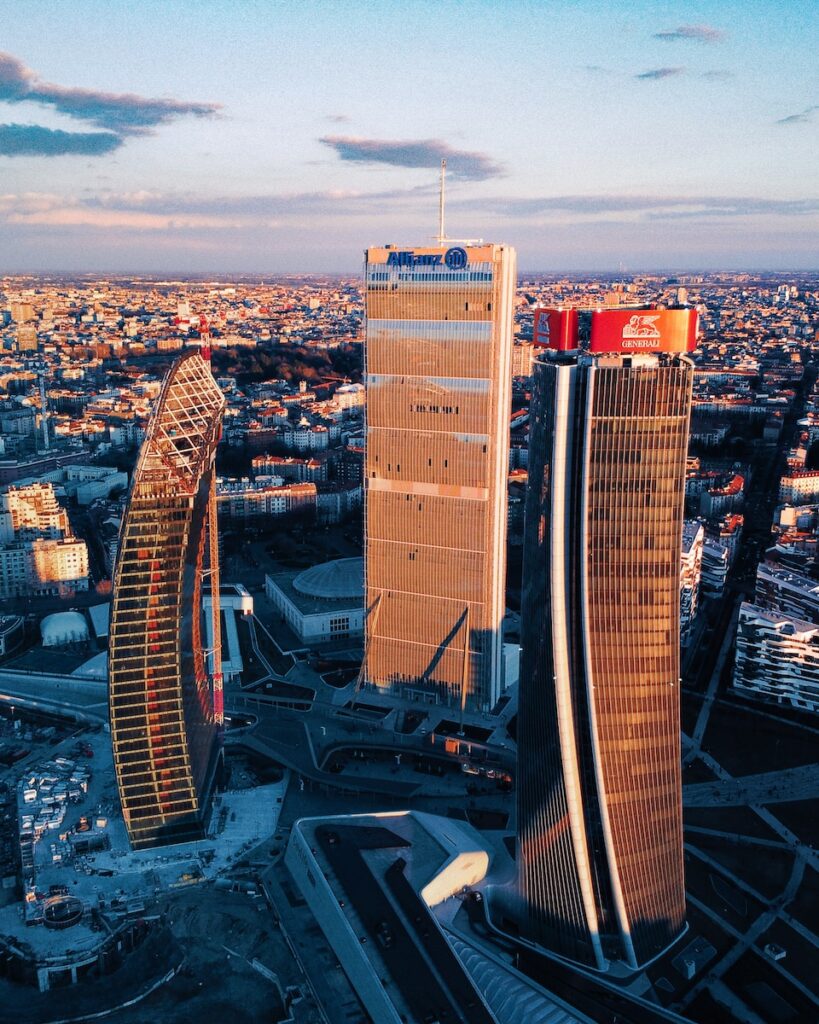The 10 Best Neighborhoods in Milan
Coming up in this guide: perfect places to live, lots of fashionable folk, and a whole load of pizza and pasta.
Benvenuto!
So, you’re an adventurous globetrotter, and you’re planning to move to Milan.
Nice choice. It’s one of Europe’s most charming major cities, and you’ll probably fall in love with the place.
But (as all incoming expats do) you’ve realized that Milan’s very-varied neighborhoods offer very-varied atmospheres. So where do you wanna live? Porta Venezia? Navigli? San Siro? Or one of the other (around 80!) options?
Yep, it’s a confusing dilemma.
But it’s not all bad news: your relocation-lovin’ friends here at Homelike are… as always… one step ahead. And in this useful guide, we’ve brought you the 10 best neighborhoods to live in Milan, along with details on the type of people who’ll enjoy each one.
In our list of the 10 best neighborhoods to live in Milan, we’ve covered the following ten districts:
- Brera
- Quadrilatero della Moda
- Porta Venezia
- Porta Nuova
- Navigli
- San Siro
- Isola
- Porta Romana
- Città Studi
- Zona Tortona
But before we get to all the information on those places, here are some quick details on the city overall…
Why Choose Milan?
(Or, as most people would probably argue, why not choose Milan?)
Well-known for fashion, shopping, and some of the most famous art and architecture on the planet (da Vinci’s iconic Last Supper sits in the city!), Milan is a mish-mash of old and new:
It has a proud local culture, but it also hosts a big international scene (around 20% of the city’s residents are non-Italian). It offers huge history and lots of ancient buildings, but it’s also a fast-paced future-fest. It’s in some ways pretty traditional, but it’s also home to lots of mega-modern boutiques and businesses… and some huge financial hubs.
In short, if you want to live in a modern city that still retains its retro charms, Milan is a perfect choice.
It’s also a nice option if you want to feel like you’re *really* living abroad, and not just in an identikit city that could be anywhere on the planet—yep, Milan is developed and modern; but it still feels very Italian. Depending on your perspective, you may think this is a good thing or a bad thing… but you don’t get as many international eating, drinking and entertainment options here as you might in other big cities.
Other perks of living in Milan include high levels of safety, lots of walkability, some of the best food you’ve ever eaten (it’s authentic Italian food—of course it’s good), endless cultural attractions, nice green spaces, nearby weekend escapes (like Lake Garda, Lake Como, the Alps, and many forests and parks), and some great international schools.
Just for a bit of balance, some of the downfalls of living in Milan include a relative lack of diversity (most Milan expats are young working professionals), occasional language barriers, and sometimes-high prices. But, as you’ve probably worked out by now, the positives of living in Milan far outweigh the pitfalls.
Alright, enough of all that—here are the best neighborhoods to live in Milan…
Best Neighborhoods to Live or Stay in Milan
1. Brera
Best for: feeling like a tourist, loads of great green spaces, and centrality without bustle
Brera is part of Milan’s Centro Storico district (also known as both ‘The Old Town’ and ‘Zone 1’), the very center of the very center of the city.
Centro Storico is the least residential part of Milan, and it’s home to most of the city’s famous places and attractions. Here, you can expect churches, museums, theaters, and most of the stuff you’ve heard of.
Tourists spend the vast majority of their time here, so it’s a good place to live if you’ll only be around for a short while…
… but because Centro Storico is pretty big (measuring in at around 2 miles/3.5km from one end to the other) it’s made up of a few different districts; more of which we’ve covered soon.
But Brera in particular is one of the most endearing parts of the Centro Storico. Cobbled, leafy and loveable, it serves up popular boutiques, little galleries, loads of aperitivo bars, and good proximity to everything you’ll want to see (from Brera, you’re never gonna be more than a 30-minute walk from any of the city’s most famous central attractions).
The neighborhood also offers many parks and green spaces. It’s home to the popular Brera Botanical Garden, and it’s also right beside both Indro Montanelli Gardens and Parco Sempione (two of the biggest, best, and most adventure-packed parks in the city).
Overall, Brera is one of the best neighborhoods in Milan for mixing pockets of peace with plenty of action. You’ll never be bored, but you’ll never be overwhelmed by too much bustle. And if you’re moving to Milan with kids, it’s one of the best central districts.
There’s only one major drawback of the area: if you’re moving to any part of the Centro Storico (including Brera!), you might struggle to find a nice apartment. There aren’t a massive number of options here, and the best ones are usually on and off the market within days (typically taken by locals, who speak the local language, and have local contacts).
… so when you’re moving to Centro Storico, it’s usually much easier—at least in the short-term—to move into a serviced apartment or serviced flat.
2. Quadrilatero della Moda
Best for: fervent fashionistas, hanging with high-rollers, and buying pricey clothes
Also located in Centro Storico—and sitting right beside Brera—tiny Quadrilatero della Moda is mainly known as a shopping district.
Famous for high-end fashion, this little neighborhood isn’t for everyone… but if you want to get knee-deep in all the Milan retail clichés, this is exactly where you’ll want to be.
You won’t find cut-price deals here. Instead, you’ll find the biggest luxury clothing brands on the planet, like Gucci, Prada, Chanel, Moschino, and Ralph Lauren. And as you’d expect, the apartment prices (just like the clothes prices!) are pretty high.
We recommend this area for short-term stays of a couple of months or less.
As a semi-temporary base, it’s fun and novel, and it’s well-located for exploring all other parts of Milan’s central area…
… but if you’ll be in the city for a while, it’s usually better to live somewhere a little more affordable. Yep, this is one of the best neighborhoods in Milan for regular shopping—but in the long-term, you can easily travel into the district from all other parts of the city.

3. Porta Venezia
Best for: feeling safe, moving with kids, and making a variety of friends
The northeastern corner of Centro Storico (and the third and final Centro Storico neighborhood we’re bringing you), Porta Venezia borders Quadrilatero della Moda.
Like its nearby neighbor, it serves up a bunch of shopping opportunities. It’s home to the famous street of Corso Buenos Aires, offering stores for most budgets.
But it also offers a lot more variety. Other highlights in Porta Venezia include the Natural History Museum, the GAM Gallery of Modern Art, and Indro Montanelli Gardens (featuring playgrounds, ponds, rides, a Planetarium, and lots of walking trails).
Because Porta Venezia offers lots of kid-friendly stuff (along with a very safe atmosphere), it’s one of the city’s best districts for moving with children. And because it’s one of the most multicultural parts of the city center (with people and influences from Africa, the Middle East and more), pretty much anyone can feel welcome and at home here.
It’s also one of the best neighborhoods to live in Milan for queer people. You’ll find lots of gay bars, a welcoming atmosphere, and plenty of people from the LGBTQIA+ community. Some of the top LGBTQIA+ hangouts include Pop, Red Cafe, and Sui Generis.
Other perks of Porta Nuova include excellent nightlife, a good location without too many tourists, and some of the city’s best public transport. All in all, Porto Venezia is one of the best neighborhoods in Milan, and it’s suited to a wide range of people.
4. Porta Nuova
Best for: finding a job, prioritizing work, and living in a fancy apartment
Sitting just north of the Centro Storico (and bordering all three of the neighborhoods we’ve brought you so far), Porta Nuova is most well-known as a fancy business district.
It’s one of the best neighborhoods in Milan for young professionals who want to prioritize earning and working… but it’s not an ideal option for anyone else.
While other parts of Milan feel ancient, Porta Nuova feels sleek and futuristic, with an atypical high-rise skyline. It’s home to big businesses, big skyscrapers, and big ambitions.
Here, you’ll find offices, co-working spaces, job vacancies, and lots of networking opportunities. In some ways, because Porta Nuova seems quite self-contained, it feels like a big modern village—but without the welcoming low prices you might find in an actual village.
It’s also in a good location for people who regularly travel for work. Porta Nuova is only a short walk from both Porta Garibaldi railway station, and the city’s main railway station.
5. Navigli
Best for: late-night living, making friends with young people, and an excellent international school
If you want hip and happening, this is one of the best neighborhoods to live in Milan.
Sitting southwest of the city center, Navigli offers lots of young people, a bunch of cool hangouts, and endless places to stay out late.
Navigli is a triangular district—and two of its edges are bordered by canals. On and around these canals, you’ll find cobbled streets, vintage stores (selling furniture, clothes, bicycles, and pretty much everything else you can imagine), and loads of places to eat and drink. Some of the top canalside venues here include black-clad old-timey Mag Cafe, Brambilla’s Caffè (with its excellent coffee), and famous-for-cocktails Banco.
Navigli is also close to Bloom International School, which some people reckon is the best international school in the city. If you’re moving with kids, this school (and therefore this district!) should rank high on your list.
Other family-friendly perks of living in Navigli include peaceful daytime hours, lots of opportunities for canalside strolls, and many kid-friendly cafes and restaurants. And on top of all that (because of its location and its canals), Navigli is a great base for heading out on some exciting bike rides.

6. San Siro
Best for: finding an affordable home, good healthcare, and lots of world-class football
West of the city center, the district of San Siro is most well-known for hosting the football stadium of the same name (and when we say ‘football,’ we mean ‘soccer’).
One of the biggest and oldest stadiums in Europe, it’s—uniquely—the home stadium of two different teams: Inter Milan and AC Milan.
So, of course, football dominates this area of the city—and most weekends, the place is full of energy and atmosphere (and it’s pretty intense). So if you want to regularly watch football, it’s one of the best neighborhoods to live in Milan.
Other perks of living in the district include relatively affordable housing, close proximity to San Carlo Borromeo hospital (where you’ll find some English-speaking staff), and a good location for two different international schools.
… and because it’s around 5 km (3 miles) from the center of the city, the San Siro neighborhood isn’t as busy and bustling as the central stretches. Well, unless the football is on.
Top tip: if you want to live close to San Siro, but not actually in San Siro, consider heading to the strangely-named CityLife. A hyper-modern redevelopment project, it features restaurants, stores, green spaces, apartments, a cinema, and more.
7. Isola
Best for: living in a hipster hub, hanging out in quirky venues, and finding a low-price home
North of the central stretch (but still sitting very centrally), Isola is another of the trendiest parts of the city.
While it was once a working-class area, Isola has recently undergone (and still is undergoing) a whole load of regeneration. And you can expect all the rapidly-regenerating neighborhood clichés: kooky street art, herds of young hipsters, cyclists, flea markets, thrift shops, and nightlife venues hidden inside tucked-away buildings.
Some of the top nightlife venues here include White Rabbit Speakeasy, Bar Golf, and Bar Frida.
But despite all the bars and bohemians, slices of retro life in Isola still remain. You get a daily old-school market (featuring fruits, vegetables, and wrinkled faces), many nearby churches, and a bunch of lifelong residents.
Two other big perks of living in Isola include close proximity to Porta Garibaldi train station (it borders the district to the south), and easy access to walks and wanders in the famous Monumentale Cemetery.
Last of all, Isola is also one of the best neighborhoods in Milan for finding an affordable home. Though rents are rising (and though they’ll continue to rise), it’s still possible to find a cut-price apartment here. But because of the popularity of the district, it’s often easier (or at least less stressful) to find a serviced apartment or a serviced flat.
Fun fact: although Isola absolutely isn’t an island, it’s name translates to “island.”
8. Porta Romana
Best for: homes for all budgets, mixing quiet with cocktails, and munching on some international eats
Sitting just southeast of the very center of the city, Porta Romana is an area of contradictions:
Though it’s known for high-end boutiques and fashion stores, it’s also home to many on-a-budget students. While one part of the neighborhood is pricey apartments, another offers low-cost housing. And although it’s quite a local area (with many local people), it also offers lots of international eateries (and the kooky arts center of Fondazione Prada).
One of the most residential areas we’ve brought you, it’s one of the best neighborhoods in Milan for living long-term. It’s also a decent choice for living a peaceful life—although there are many appealing restaurants and cocktail bars here, it’s still one of the quietest districts on our list.
It’s also a little more organized than the central parts of Milan. Instead of maze-like narrow lanes, the layout of Porta Romana is grid-like, easy to navigate, and easy to get used to. And because it’s far from the center of the tourist sprawl, the neighborhood feels a little more authentic than most.
Overall, Porta Romana is best suited to young families, and anyone else who wants to combine city bustle with a bit of relaxation.
And because it’s close to both the Università Bocconi, and the University of Milan, the district is also a good choice for students (and therefore a good choice for any young people!).

9. Città Studi
Best for: university buildings, hanging with young people, and saving some money
East of the city center, Città Studi (as you might have guessed from its name) is one of the most studenty areas of the city. So if you’re young—or if you’re studying at the city’s technical university, the Politecnico—this is where you’ll want to live.
The neighborhood also includes some of the technical and scientific campuses of the University of Milan, and good proximity to all other parts of the University of Milan—so it’s a good choice for most students relocating to the city.
Because Città Studi is in Zone 3 of Milan, some of the housing here is a little more affordable than it is in most other parts of the city.
But don’t worry, this still isn’t an outskirt area: to get from here to the very center, you’ll spend around 15 minutes on public transport (or around 45 minutes walking). So for reasonable centrality without living in the heart of the city, it’s one of the best neighborhoods in Milan.
Because it’s a student-heavy zone, you’ll find lots of affordable and easygoing cafes and bars in and around the area. Popular hangouts include Cocktail & Conversation, the living-room-like Casa Mia Cocktail Bar, the informal Union Club, and Maoji Street Food (which serves up excellent Chinese eats).
Other interesting venues in the neighborhood include UpCycle (a bike-themed cafe offering bike repairs, a welcoming vibe, and a work-friendly space), and lots of places to exercise (including a trampoline park, lots of sports pitches, and a swimming pool).
10. Zona Tortona
Best for: raising kids, feeling part of a community, and unusual events and attractions
Lying on the southwestern edge of the city center, Zona Tortona is a kooky and creative area. Bordering Navigli, it’s pretty similar to its nearby neighbor, but it’s not so well-known.
Perks of the area include green spaces, canalside stretches, Mudec Museum (sitting inside a refurbished factory, and featuring art from around the world), artists’ workshops, cultural spaces offering temporary events and exhibitions (like photography-based Superstudio 13), the Armani Museum, and other arty venues.
It’s also a good option for high-end eats. For top-quality meals and morsels, try Langosteria, Osteria Del Binari, and the Asian treats of DOU.
Zona Tortona is also a great family-friendly area. It’s quiet and peaceful, there’s a proud community spirit, some of the homes are pretty affordable, it’s way safer than it used to be, and you’re only around 2 miles (3 km) from the very center of the city.
And on top of all that, Bloom International School (as mentioned, often considered to be the best international school in the city) is right inside the district.
Overall, this is one of the best neighborhoods to live in Milan for lots of people. Good for bohemians, good for families, good for people who want to save some money. If you don’t mind being vaguely outside of the center, it’s a great place to start your search!
10 Best Neighborhoods to Live in Milan: Before You Go
Okay, there they are—the best neighborhoods in Milan, and the best neighborhoods to live in Milan!
As we’ve mentioned, it can often be tough to find a good apartment in Milan—and it’s especially difficult if you’re not yet in the city. If that’s the case, it’s usually easier to live in a serviced apartment or flat for at least a little while… which saves you the hassle of viewings, rejections, language barriers, bureaucratic hassle, and trying to source furniture.
Whatever type of home you live in, you’ll have an incredible time in Milan. Cosmopolitan but cultured, modern but retro, it’s ‘real’ Italy, but without any of the pitfalls of living in some remote village. And because many foreigners live here, it’s easy to feel welcome and at home.
For more on relocating to Italy, here and here are inspiring reports of people doing exactly that!
Thanks for reading, thanks for choosing Homelike, and have an incredible time in Milan. Buona fortuna!























